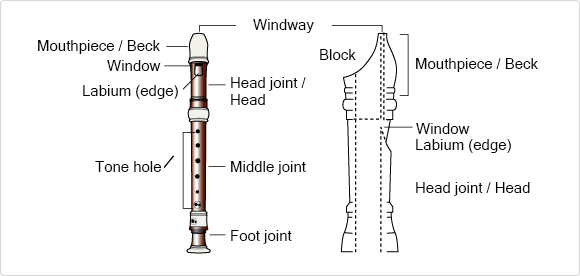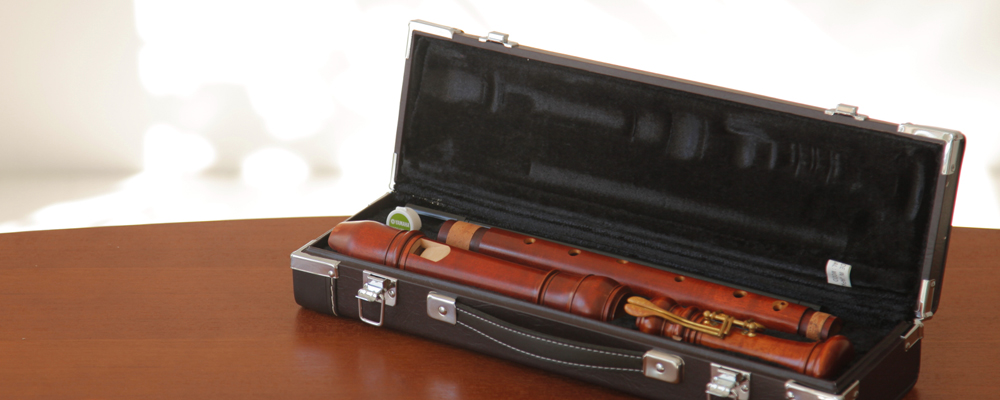The Structure of the Recorder
Learning the names of its parts
Parts of a recorder

The shape of the windway
Straight type
Easy to play, gentle timbre. Combines pleasantly with other sounds.

Arched type
Easier to control breath due to the degree of resistance felt when blowing. Brilliant timbre with a degree of tension.

Differences between two-joint and three-joint recorders
There are recorders that are comprised of bodies split into two joints, and also instruments that are split into three joints. On a three-joint recorder, the foot joint can be rotated, offering the advantage of being able to adjust this section to reposition the tone hole so that it can be more easily reached by the little finger of the right hand.

